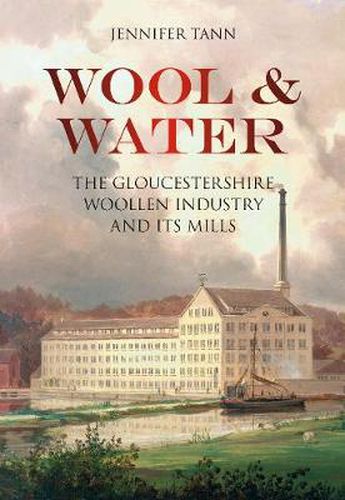Readings Newsletter
Become a Readings Member to make your shopping experience even easier.
Sign in or sign up for free!
You’re not far away from qualifying for FREE standard shipping within Australia
You’ve qualified for FREE standard shipping within Australia
The cart is loading…






In the woollen industry’s heyday Gloucestershire had over 200 mills, producing cloth which was transported to markets all over the world: to Europe, Hudson’s Bay, India; it clothed the British Army and was used for coronations and even the Pope’s robes. The author’s previous and much-consulted work, Gloucestershire Woollen Mills, has long been out of print, making the time ripe for a fresh appraisal of this fascinating period in history. Wool & Water traces the origins of the water-powered industry from the late twelfth century to its demise, with two mills remaining in the twentieth century. Themes discussed include the organisation of the ‘domestic’ industry until the mid-eighteenth century; the development of the factory; fluctuations in trade and, finally, competition from Yorkshire. Containing previously unpublished material and unique illustrations from private collections, plus a comprehensive gazetteer of the county’s textile mill sites, Wool & Water is the ideal book for those interested in the industrial heritage of Gloucestershire.
$9.00 standard shipping within Australia
FREE standard shipping within Australia for orders over $100.00
Express & International shipping calculated at checkout
In the woollen industry’s heyday Gloucestershire had over 200 mills, producing cloth which was transported to markets all over the world: to Europe, Hudson’s Bay, India; it clothed the British Army and was used for coronations and even the Pope’s robes. The author’s previous and much-consulted work, Gloucestershire Woollen Mills, has long been out of print, making the time ripe for a fresh appraisal of this fascinating period in history. Wool & Water traces the origins of the water-powered industry from the late twelfth century to its demise, with two mills remaining in the twentieth century. Themes discussed include the organisation of the ‘domestic’ industry until the mid-eighteenth century; the development of the factory; fluctuations in trade and, finally, competition from Yorkshire. Containing previously unpublished material and unique illustrations from private collections, plus a comprehensive gazetteer of the county’s textile mill sites, Wool & Water is the ideal book for those interested in the industrial heritage of Gloucestershire.